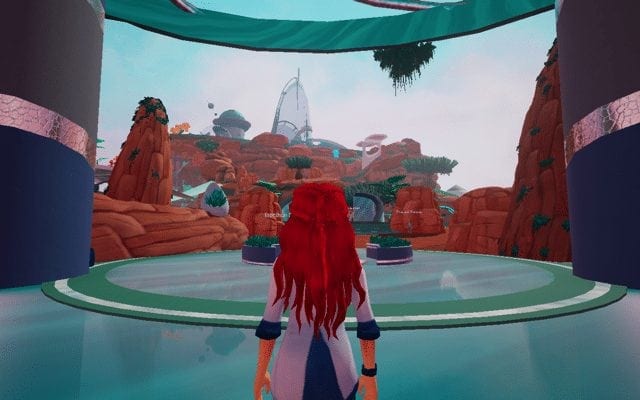Choosing an Educational Game
If you decide that educational games might be useful for your child, it might seem like there are way too many things to consider. How popular they are, what themes and subjects to focus on, how recommended they are and so on. And while there are a lot of educational games out there, I hope I can help you narrow down your options — not based on what the games seem like on the surface, but on what type of learning your child will experience when they’re playing.
What is your Child Actually Doing while Playing?
One of the most important things to keep in mind is what your child will actually be doing when they play a game. A lot of educational products have rewarding elements like character customization, pets, apartments, etc., but obviously this shouldn’t be where your child is spending all their time in a game. So it’s good to ask: Are they spending their time problem-solving? Are they engaging deeply on educational subjects? Not just memorizing content, but actually participating in it?
The following story illustrates this quite clearly:
“A teacher once told me that for a fourth-grade unit on the Underground Railroad he had his students bake biscuits, because this was a staple food for runaway slaves. He asked what I thought about the assignment. I pointed out that his students probably thought for forty seconds about the relationship of biscuits to the Underground Railroad, and for forty minutes about measuring flour, mixing shortening, and so on. Whatever students think about is what they will remember.” (Willingham)
Of course, if the teacher’s goal is to practice measuring and cooking, that’s great. But if their goal was learning about the Underground Railroad, they fell short. This is because of the key concept: “Memory is the residue of thought.” This is one of the biggest takeaways from Willingham’s book, “Why Don’t Students Like School: A Cognitive Scientist Answers Questions About How the Mind Works and What It Means for the Classroom,” which I highly recommend!
So with any material, consider what your child is actually going to be thinking about. What are they going to spend time doing? Because that’s what they’re going to get out of it.

Lower-Order Practice vs. Higher-Order Conceptual
I generally categorize educational games into two groups: Lower-Order Practice and Higher-Order Conceptual Learning. Both have their functions in a child’s learning, so let’s take a closer look:
Lower-Order Practice
Lower-Order Practice is the kind of learning where children answer questions and practice remembering content, but don’t actually learn the concepts or do anything particularly unique with them. For example, a child has to be taught how to do the math problem before they do a math-themed version of this type of game. A Lower-Order Practice game isn’t great for learning the content for the first time or helping them understand the concepts behind it.
And we’ve all seen this type of activity before: glorified worksheets with better-than-average behavioral and motivational science behind them.
I use the term Lower-Order in reference to Bloom’s Taxonomy of educational goals. In Lower-Order Practice games, the activities take place in the lower half of thinking skills:
- Remember what they’ve learned by recognizing and recalling information;
- Understand by classifying, comparing, or other activities;
- Apply by using what they’ve learned on other problems, sometimes in new contexts or slightly harder examples.
I should emphasize that there’s nothing inherently wrong with Lower-Order Practice, because we do need to practice these skills and be able to memorize information. All the hype about how we don’t need to memorize information anymore because we can look everything up on Google is just that — hype.
Math is an easy way to explain why this is important: in general, people can only hold 5-9 items in working memory at a time. Therefore, if you don’t memorize your times tables by the time you get to algebra, it’s hard to have to constantly pause in the middle of solving a problem to do multiplication, as you end up dropping items out of your working memory. In the exact same sense, we can’t perform higher-order thinking skills like creating, connecting points, and being creative unless we already know the basics. So there’s definitely a need for practice and repetition to make sure the basics are mastered.
This form of educational gaming works well across several types of devices: mobile, tablets, and computers, though most Lower-Order Practice games are apps or web-based for quick, in-and-out sessions lasting for a relatively short period of time. For example, the games available at Coolmath.com, Funbrain.com, and ABCya.com are largely simple practice games. I’ve had teachers tell me that these types of games generally retain their students’ interest for about 10 minutes.
Higher-Order Conceptual Learning
Games with Higher-Order Conceptual Learning use systems, problem-solving, and more in-depth types of gameplay to help the player develop a strong conceptual understanding, and they often use a constructivist approach to learning.
These type of games really take advantage of the power of what games can do, with potentially open-ended systems that let players experiment and get a much better, deeper understanding.
So in Bloom’s Taxonomy, Higher-Order Conceptual Learning has children:
- Analyze by differentiating, organizing, and attributing as players problem-solve;
- Evaluate by checking and judging to make decisions;
- Create to generate hypotheses, plan, design, and produce solutions.
For example, in our game, Tyto Online, players engage in an ecosystem-building Sandbox. They use the basics they’ve learned to analyze their ecosystem, evaluate the evidence to decide what’s causing issues (like, “Why are my jackrabbits dying so quickly?!”), generate a hypothesis (“They have too many predators, or not enough food”), and then produce a solution. Players go through an engaging, iterative cycle of problem-solving and the scientific method constantly during gameplay.
Some of my favorite examples of Higher-Order math games include Motion Math’s games where children do conceptual activities like exploring a number line at various scales; and Dragonbox Learning, where players start by developing the concepts of algebra with balancing puzzles, and then work their way into replacing the symbols with letters and numbers until they’re solving full algebraic equations in the game.
There are even educational games that can enable types of learning that are difficult or impossible to do in real life as a child: build a spaceship with Kerbal Space Program, play with the universe’s physical variables with Universe Sandbox, or create an ecosystem from scratch with Tyto Online.
Session times in Higher-Order educational games are often a lot longer, depending on the game and what your child is exploring. Therefore it makes more sense to use computer installed games or tablets, or at least a setup where your child will feel comfortable playing for 30-60 minutes instead of 10.
Conclusion
For the practical side of timing and devices, consider:
Are you going for “instant” or “active” gaming? One of the most helpful workshops I attended divided mobile & tablet gaming into “instant gaming,” and computer & console gaming into “active gaming.”
- Instant Gaming: on mobile devices, educational games are grab-and-go, and session times often average only 5 minutes. This can be great for quick reinforcement or other activities.
- Active Gaming: on consoles or computers, the act of getting set up to play the game can take as long as the entire Instant Gaming experience! Therefore, these sessions are usually much longer and made for replayability, sometimes hours, and can be great for deeper and conceptual learning as players experiment, iterate, and create during their gameplay.
And finally, to assess if a game is right for your child, the main thing I would suggest is:
Consider the outcome you want and compare it to what your child will actually spend their time doing in the game. Are you using the game for practice and review? Do you want to help develop conceptual understanding? Do you want to improve their “21st Century skills,” like problem-solving and collaboration? Does the game help them reach that outcome?
There’s no “one size fits all” approach when it comes to knowing if an educational game is right for your child with so many options out there that fill many different potential needs. While we mainly focus on developing Higher-Order thinking with Tyto Online, we’ve also built in repetition and opportunities for children to understand the basic knowledge they need in order to get the full experience of the game.
To read more about the learning mechanics we use in Tyto Online, head over to our blog post outlining our approach.
[button link=”https://seahomeschoolers.com/tyto-online-group-buy/” type=”big” newwindow=”yes”] Tyto Online Group Buy[/button]

Find out more:
Immersed Games (the studio): www.immersedgames.com
Tyto Online (the game): www.tytoonline.com
Lindsey Tropf’s personal twitter: @ltropf
About the Author

Lindsey Tropf, Founder & CEO of Immersed Games, was a doctoral candidate at the University of Florida in School Psychology, with a specialization in Program Evaluation and a Minor in Research & Evaluation Methodology, with expertise in data-based decision making. Her background has led to an expertise in teaching & learning, children’s development, social-emotional health, behavioral management, and executive functions. She now works on strategy and vision, product development, business development, marketing, and anywhere else she is needed at Immersed Games.

